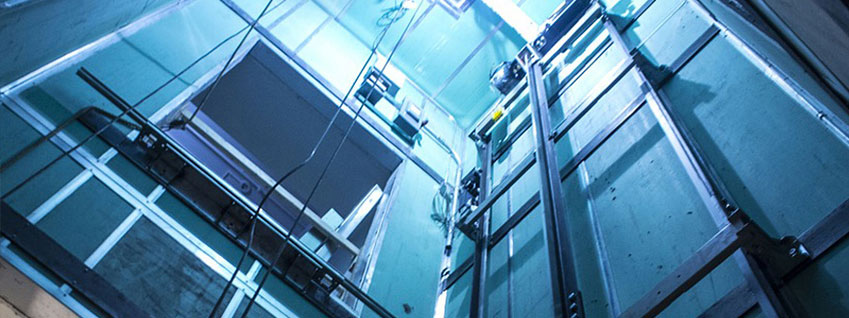Leading Lift Companies in London: Supplying Exceptional Solution and Assistance
Leading Lift Companies in London: Supplying Exceptional Solution and Assistance
Blog Article
Diving Into the World of Elevators: Typical Issues Encountered by Various Lift Mechanisms
As we browse with the upright transport systems of contemporary structures, lifts stand out as a vital component of our day-to-day lives. From hydraulic elevators to grip systems and machine-room-less layouts, each lift kind comes with its set of typical problems.
Hydraulic Lifts
Hydraulic elevators, often chosen for low-rise buildings, use fluid stress to regulate the movement of the elevator auto (lift repair companies). This system includes a hydraulic pump pushing oil into a cyndrical tube, creating the elevator to relocate the wanted instructions. While hydraulic lifts are known for their peaceful and smooth procedure, they do include their own set of typical issues
One widespread trouble with hydraulic elevators is oil leakage. Furthermore, issues with the control system, such as faulty valves or a malfunctioning pump, can create disturbances in the lift's motion.
Routine maintenance and punctual fixings are important to guarantee the smooth performance of hydraulic lifts. By resolving these typical problems proactively, building proprietors can lessen downtime and make sure the safety and security and effectiveness of their vertical transport system.
Grip Elevators
When considering upright transportation systems in structures, an additional common kind other than hydraulic elevators is the grip elevator. Traction elevators operate making use of a system of ropes and counterweights that relocate the elevator automobile by clutching onto the hoist ropes. This system allows for smoother and much faster vertical transport compared to hydraulic systems.
Among the typical issues encountered by traction lifts is rope wear. The continuous activity of the ropes within the traction system can bring about tear and wear over time, potentially causing the lift to malfunction or end up being risky for use. Normal inspections and upkeep of the ropes are necessary to guarantee the elevator's proper performance and security.
One more concern that grip elevators may run into is associated to the control system. Troubles with the control system can result in concerns such as erratic motion, hold-ups in response times, or perhaps full shutdowns. Routine testing and maintenance of the control system are crucial to stop such concerns and ensure the elevator's dependability.
Machine-Room-Less (MRL) Lifts

One of the key parts of MRL elevators is the portable gearless grip device that is installed within the hoistway. This equipment effectively drives the elevator auto without the requirement for large equipment discovered in traditional grip elevators. In addition, MRL elevators commonly use a weight system to balance the auto, additional boosting their energy performance.
In spite of their benefits, MRL lifts may deal with obstacles associated with maintenance and repair work due to the restricted room for tools installation. Availability for servicing parts within the shaft can be restricted, requiring specialized training for service technicians. Correct maintenance schedules and routine assessments are crucial to guarantee the continued smooth operation of MRL lifts.
Overloading and Weight Restriction Issues
Overloading and weight limit issues are crucial issues in elevator procedures. Lift makers layout raises with particular weight capabilities to guarantee passenger safety and equipment durability.
When lifts are strained, it puts excessive pressure on the electric motor, cable televisions, and various other parts, potentially triggering malfunctions or breakdowns. If they discover excess weight, safety devices such as sensing units and overload sensors are in area to stop elevators from relocating. Additionally, going beyond weight limits can bring about boosted energy usage and wear and tear on the lift system.
To mitigate overwhelming concerns, building supervisors should plainly display weight limitations in elevators and inform owners on the value of sticking to these limitations - lift repair companies. Normal look at here maintenance checks by certified specialists can additionally help make sure that elevators are operating within risk-free weight parameters. By attending to overloading and weight restriction issues proactively, structure proprietors can enhance elevator safety and security and efficiency
Electric System Failings
Going beyond weight restrictions in lifts can not just lead to mechanical problems however likewise possibly add to electric system failures within the lift infrastructure. Electrical system failures are an important problem in lift procedure, as they can trigger unforeseen shutdowns, breakdowns, or also security risks.
Moreover, power surges or variations in the electric supply can additionally interrupt the elevator's procedure, influencing its efficiency and security. These electrical disruptions can harm sensitive lift parts such as control panels, circuit boards, or sensing units, leading to system failings. Regular maintenance and examinations are essential to recognize and address possible electrical concerns quickly, making sure the safe and effective operation of lift systems. By adhering to weight see this page limits and performing routine electric system checks, structure proprietors can alleviate the risk of electric failures in lifts.
Verdict

Hydraulic lifts, frequently preferred for low-rise structures, utilize fluid stress to control the activity of the elevator car.When considering upright transportation systems in structures, another typical type aside from hydraulic elevators is the grip lift. Traction elevators run using a system of ropes and weights that relocate the elevator car by grasping onto the hoist ropes. Unlike traditional elevators that call for a different maker room to house the devices, MRL lifts integrate most of the parts within the shaft, eliminating the requirement for a committed machine space.In verdict, elevators deal with usual issues such as hydraulic malfunctions, traction system failings, and electric system problems.
Report this page